The face of the Lost, Anne Frank
 |
| Anne Frank. |
Annelies "Anne" Marie Frank (12 June 1929 – early March 1945) was just an ordinary Dutch girl from an ordinary family. The family happened to be Jewish, which is why terrible things happened to them.
I have been to the Anne Frank Huis (more than once), but obviously, these are not my pictures.
Anne Frank was born in Frankfurt, Germany, the second daughter of Otto Frank (1889–1980) and Edith Frank-Holländer (1900–45).
The family, including sister Margot Frank (1926–45), moved briefly to Aachen, Germany, and then to Amsterdam, in 1933.
 |
| Margot Frank, the older sister of Anne Frank, standing in front of the doorway of the Jeker school in Amsterdam with a plaque at her feet that says 'memory of my school year 1936' in Dutch. |
That was the year that Hitler took power in Germany.
 |
| Margot and Anne Frank |
There is every indication that the Franks lived an ordinary life in Germany during the 1930s. Mr. Frank was a successful businessman. Anne and Margot lived the lives of ordinary girls.
In July 1942, Margot Frank received a call-up notice from the Zentralstelle für jüdische Auswanderung (Central Office for Jewish Emigration). She was to report for relocation, which meant going to a work camp.
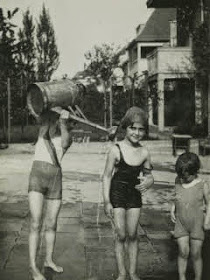 |
| Margot and Anne Frank in the Spring of 1932. |
Rather than split up, the family went into hiding. Otto found a hidden attic behind his business, Opekta, also known as Gies & Co. and relied upon his trusted employees to help out by bringing food and other necessary items. The attic has become known as the Annex.
The plan worked beautifully for over two years. On the morning of 4 August 1944, though, there was a knock on the door, and it wasn't gentle. An informer who was never identified had sent the police to the Annex.
 |
| On August 1, 1944, Anne Frank makes the last entry in her diary. |
The police were led by SS-Oberscharführer Karl Silberbauer of the Sicherheitsdienst. The group of German uniformed police (Grüne Polizei) took the Franks to headquarters. After some shuffling around, they wound up at the Westerbork transit camp.
The war was winding down rapidly - the Allies were already in Brussels, Belgium - but there was time for one last train to Auschwitz. On 3 September 1944, the group was deported on what would be the last transport from Westerbork to the Auschwitz concentration camp.
 |
| Anne Frank before the war. |
All of the Franks survived the initial screening - failing meant death in the gas showers - but that was only the start of their troubles. About a month later, Anne and Margot were transferred to another death camp, Bergen-Belsen. Edith stayed behind at Auschwitz and soon died.
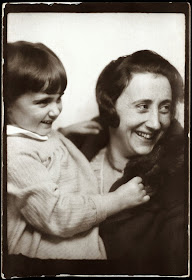 |
| Anne Frank, with her mother, Edith, circa 1932-33. |
Anne and Margot wound up at Bergen-Belsen. They survived through a miserable winter, but not long after.
The sisters both died in March/April 1945. Food was scarce and epidemics raged through the camps in unheated dormitories. Bergen-Belsen was liberated on April 15, 1945, by British troops, but it was too late for Anne Frank.
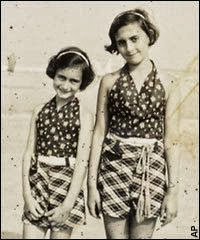 |
| Anne and Margot Frank. |
Otto Frank survived. He found out that Edith had died, but there was no word on the two girls. He had no word for months.
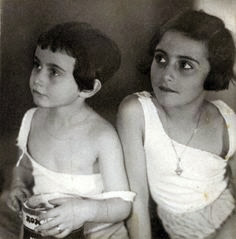 |
| Anne and Margot Frank, 1933, Aachen, Germany. |
Mr. Frank finally found out from the Red Cross in July 1945 that Anne and Margot had died that spring in Bergen-Belsen.
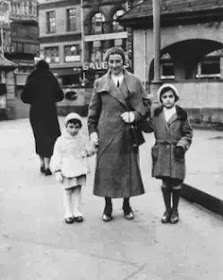 |
| The Franks in Frankfurt, Germany, 1933. |
Miep Gies and Bep Voskuijl were two of the employees who had been helping to shelter the Franks. They found some papers that the Franks had left behind and kept them in safekeeping. When Otto Frank came by, they gave him the papers.
 |
| Anne (second from left) and friends, including Hanneli Goslar and Barbara and Sanne Ledermann. |
Looking them over, Otto recalled that Anne had kept a diary. The diary was among the papers. It was a very detailed and comprehensive diary. It ended right before the Franks were arrested.
 |
| Anne Frank and Sanne Ledermann. |
Otto went and saw a historian, Annie Romein-Verschoor, about having the diary published. She didn't have any luck but gave it to her husband, Jan Romein.
 |
| I don't know the date for this shot of Anne but looks as though it probably was taken sometime in the late '30s. |
He wrote an article in the local paper about the diary. It might have ended there, but the article attracted notice. A publisher was found.
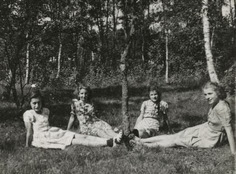 |
| Anne Frank (on left) and friends. |
The diary was published in Germany and France in 1950, and in England in 1952. At first, it attracted little attention. For some reason, the Japanese were the first to really recognize Anne Frank as a cultural figure of great significance. Her fame grew from there.
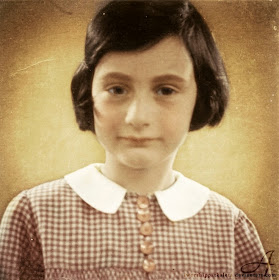 |
| Anne Frank, undated. |
Frances Goodrich and Albert Hackett wrote a play based on the diary. It won a Pulitzer Prize. A successful movie followed in 1959.
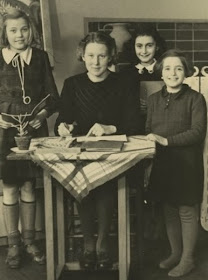 |
| Anne Frank at the Montessori school in 1940. She is 11 years old. |
"The Diary of Anne Frank," as it is known in the publishing world, has only grown in popularity over the subsequent decades. It is considered a key part of the curriculum of schools around the world. It is especially revered in Holland.
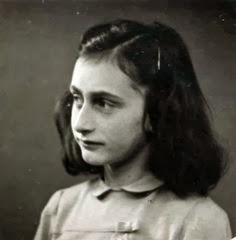 |
| Anne Frank, Amsterdam, May 1941. |
The Anne Frank House opened to the public on 3 May 1960 after Otto Frank went to great lengths to preserve it for history. It consists of his Opekta warehouse and offices and the Achterhuis where the Annex was located. It remains open to the public and is a top tourist attraction in Amsterdam. Clearly, Anne Frank demonstrated the power of the pen and never will be forgotten.
 |
| Anne and Margot Frank, 1942. This is believed to be the last photo of Anne Frank. |
The above photograph is believed to be the last known photo of Anne Frank with her sister Margot taken in early to mid-1942. This was shortly before they went into hiding. Later that year, in July 1942, Margot would receive notice that she was to be sent to Germany. The authorities were ordering her to report for relocation to a work camp. Anne was then told by her father that the entire family would go into hiding rather than split up. This they did, and they were successful for two full years. The Frank family finally was discovered and arrested on the morning of August 4th, 1944. Somebody tipped the Germans off, but the identity of that person never has been determined.
Despite everything, I believe that people are really good at heart.
 |
| Anne Frank's father, Otto. |
 |
| Anne Frank diary in Amsterdam. |
 |
| Anne Frank stamp 1988 |
The 60 agorot stamp above was issued by Israel in 1988. It shows images of young Anne Frank and the Amsterdam house at Prinsengracht 267, partially obscured by a tree, as it appeared in the 1940's.
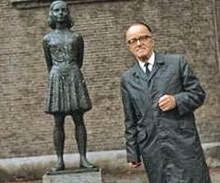 |
| Victor Kugler. |
Victor Kugler (5 June 1900, Hohenelbe/Vrchlabí – 16 December 1981, Toronto) was one of the people who helped hide Anne Frank and her family and friends during the German occupation of the Netherlands. In Anne Frank's posthumously published diary, "The Diary of a Young Girl," he was referred to under the name Mr. Kraler.
 |
| Miep Gies. |
Miep Gies was one of the Dutch citizens who hid Anne Frank, her family and several family friends in an attic annex above Anne's father's place of business. This was intended to keep the Germans from finding them during World War II. "I am not a hero. I just did what any decent person would have done."
 |
| Peter Schiff. |
Peter Schiff. The photo was taken: 1939. Discovered: 2008. In Anne Frank’s Diary, Anne called Peter Schiff her “one true love.” In 1940 at the age of 11, she wrote:
Peter was the ideal boy: tall, slim and good-looking, with a serious, quiet and intelligent face. He had dark hair, beautiful brown eyes, ruddy cheeks and a nicely pointed nose. I was crazy about his smile, which made him look so boyish and mischievous.For more than 60 years there were no photographs known of Anne Frank’s childhood sweetheart. Now, there is one.
 |
| The Anne Frank House in Amsterdam |
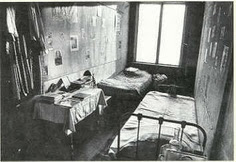 |
| Anne Frank annex. |
This is the Annex where Anne Frank, her family, and four others lived for two years and one month until they were anonymously betrayed to the authorities, arrested, and deported to their deaths in concentration camps.
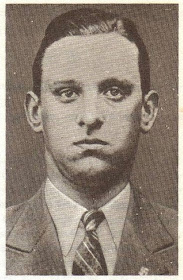 |
| Karl Silberbauer, date unknown. Note the Swastika pin. |
This is a picture of Karl Silberbauer. He was the officer that found and captured Anne Frank and her friends in the Secret Annex. He was a member of the SS.
The story of Silberbauer is important. Some might think that he was a cruel and inhuman monster who should have been hung outright as soon as he was identified as the man who arrested Anne Frank. That is an understandable feeling, based on the injustices of the world and the barbarity of the system in which he served.
Perhaps you think that, too, and that is ok. Not everybody does.
Simon Wiesenthal, the famed war criminal hunter, went to great lengths to find Silberbauer. He finally did. Silberbauer had returned to Austria and, after a jail sentence by the Russians due to his brutal interrogations of Communists, had been released. After many years of working to infiltrate possible terrorist groups for the government (basically as a continuation of his sentence), Silberbauer was rehabilitated and set free. He rejoined the Viennese police force, which is where Wiesenthal found him many years after the war.
At this point, Anne Frank had become a world celebrity. The play and diary and film were all worldwide hits. Upon learning of his past, the Austrian authorities were aghast. Silberbauer was suspended by the police force pending an investigation of what he had done during the war. It was a decisive moment in the life of Silberbauer, who freely admitted to having arrested Frank and remembered the incident with clarity. There was a media outcry against him. People hated him for what he had done.
Silberbauer admitted everything. He did not have any information about who had betrayed the Franks and simply stated that he had done his job without rancor. He had been a tiny cog in an immense wheel of injustice.
Incredibly, Otto Frank stepped forward on his behalf and testified to the court that Silberbauer had acted correctly and without cruelty during the arrest. Silberbauer, he stated, even had done his job with some degree of courtesy. That statement implies nothing about Silberbauer or his intelligence, morals or ethics or anything else aside from that limited point. Otto Frank figured that the unknown person who had betrayed them was the malefactor, not Silberbauer, who was simply doing as ordered. Mr. Frank was not joined by many in this assessment, but his opinion was decisive in Silberbauer's fate.
Otto Frank had class.
Based on Otto Frank's ability to be fair and speak up on Silberbauer's behalf, the Dutch and Austrian courts cleared Silberbauer of any wrongdoing in the incident. He had just been doing his job, they concluded. Silberbauer was reinstated to the Vienna police force and allowed to continue with his life unmolested, probably grateful that the whole thing had been hashed out and resolved. He died in Vienna about ten years later, in 1972, aged 61.
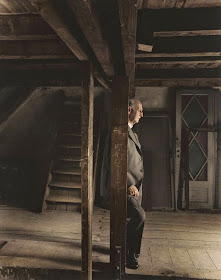 |
| Otto Frank, Anne Frank's father and the only surviving member of the Frank family, revisiting the attic they spent the war in. |
2018

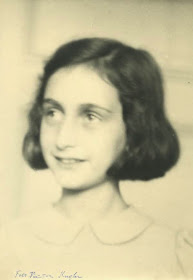

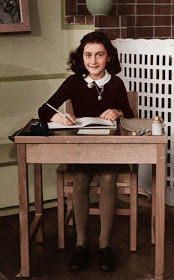

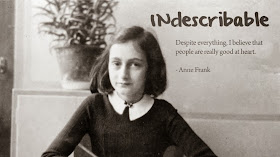

Are you sure that the picture is of Karl Josef Silberbauer,on the picture he is wearing an EK 1st Class which is a very high awaed for bravery but this is not recorded on records that I have found.
ReplyDeleteJust curious as there is no records that he was even ambitious or overly zealous in his duties.
Chris Edwards Garmisch-Partenkirchen
That was the picture widely attributed as him. I swapped it out with another of known provenance, but it still looks like the same guy.
Delete